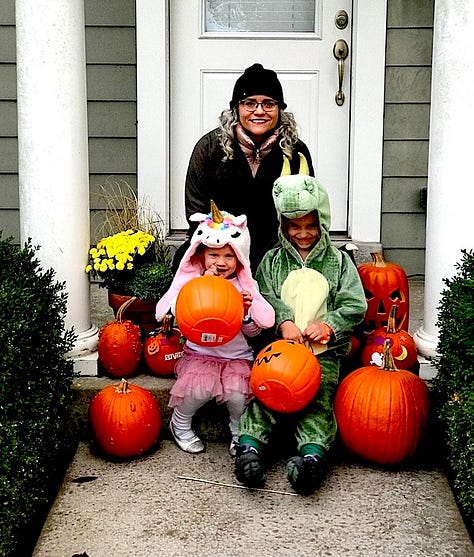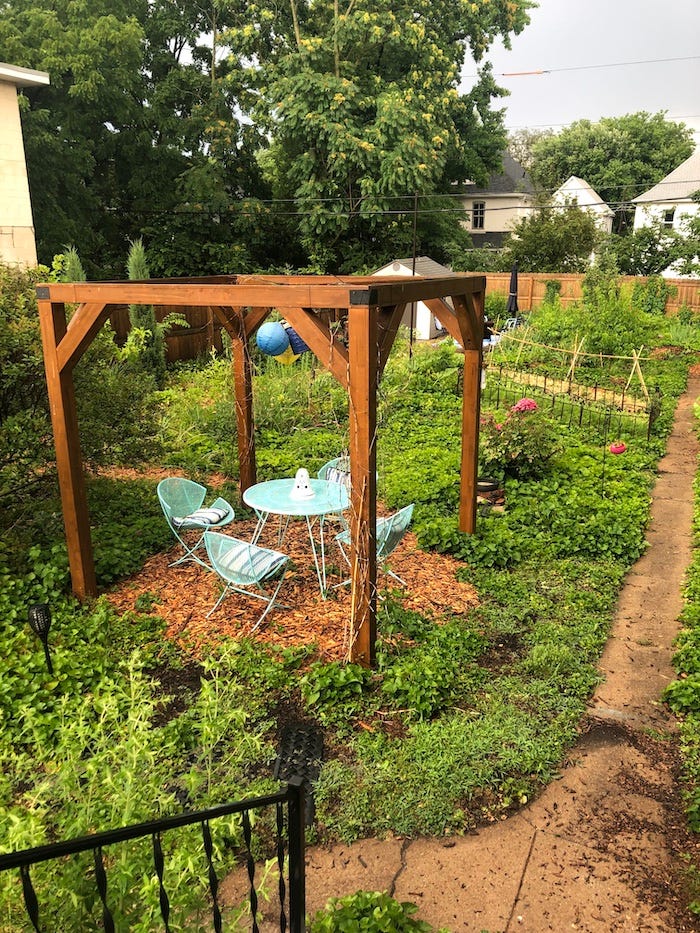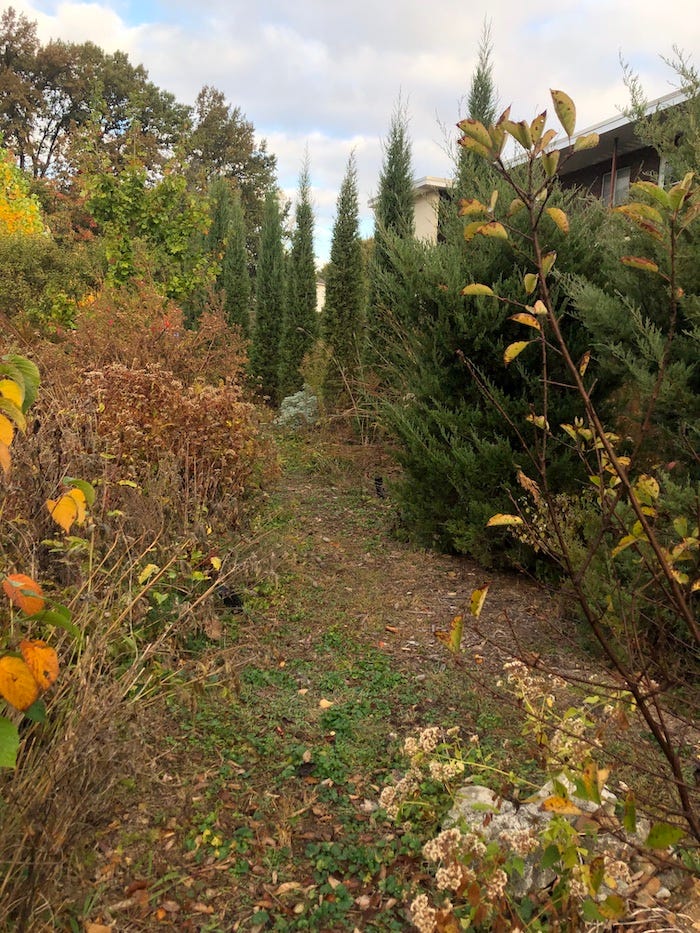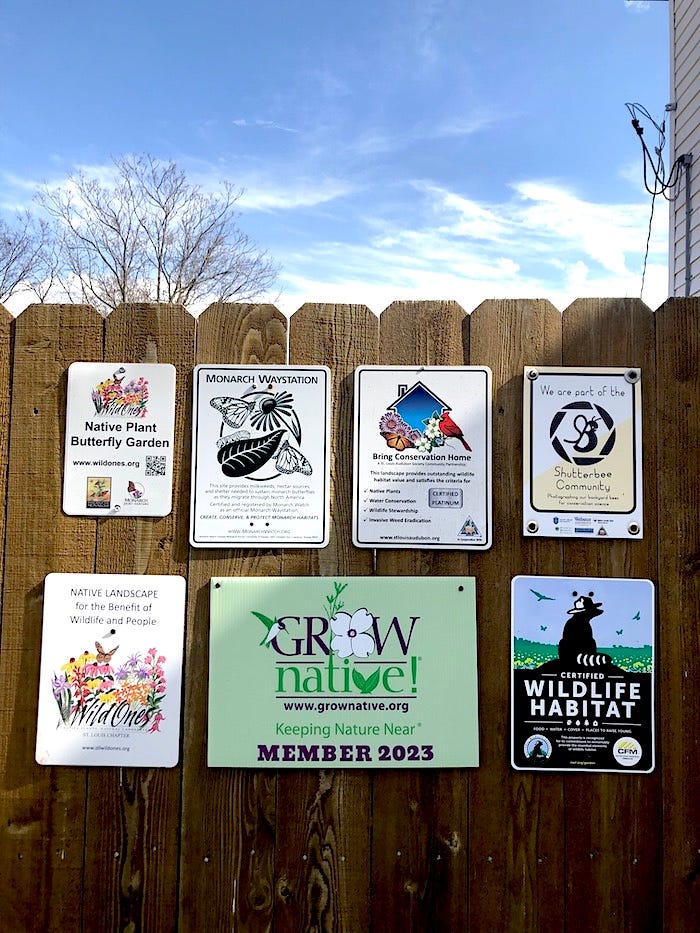Finding grace in the garden
It'll show up if you've sown the seeds.
This first appeared as a guest post on Defaulting to Grace.
Stephanie Loomis and I met here on Substack when she read my “Finding Home” series. It inspired her to pen her own piece on what a challenge the notion of going home can be, a counterpoint subtitled, “When going back isn’t an option.”
I loved Stephanie’s piece and was terribly flattered that my series prompted her to write her own, so much so that I shared hers in our Chain Links No. 2, plus I included her more recent post on going home to attend a high-school reunion in No. 5.
That said, it was highly ironic to have been positioned as the one who can somehow easily go home again, as the idea of “home” for me has always been loaded and complicated. As I told Stephanie on our video call to plan this week’s collaboration, moving back to this place I have called “home” has been in many ways extraordinarily difficult, and I sometimes think I was crazy to do it at all.
In fact, I ended up pausing that series. The only reason I’d started writing it in the first place was as a way to talk about our now seven-year gardening project, to look at the idea of returning “home” through the lens of gardening. My husband and I transformed our 1/4-acre plot in the city from your typical mix of lawn and exotic ornamentals into a wildlife-friendly food forest, winning a platinum award from the Audubon Society and a mess of other recognitions in the process. But going home became hard to write about because… there’s so much at the root of my return to this place that’s deeply personal and tough to put into words.
As a trained fiction writer (MFA, ‘02), I often analyze the world in terms of metaphor. So it’s worth noting that the series stalled out this past August when I quite literally hit a wall with the piece, “Please fence me in.”
That one had cut close to the bone more than the others, so close I had to back away.
When my husband and I moved to St. Louis in 2017, it had been 17 years since I’d left, first striking out for that MFA degree in Miami, Florida, and then a 15-year life in the Pacific Northwest. During that span, I never lived in any one dwelling longer than three years.
In the “About” section of my Substack, I describe myself like this:
Through a lifetime of frequent moves—a military brat childhood and nomadic adulthood—gardening has been her one constant.
So you might say I’ve never really had a home, at least not in the way that we think of it as a rooted, ancestral place, the place where your family has lived, perhaps even for generations. But do any of us, anymore? As Stephanie wrote of her own life’s trajectory:
From early on, we made decisions to separate our lives from the ones we lived as children and establish new priorities, create new practices, and enact new promises.
I think that describes most of us these days, at least in the United States. I discussed this in my essay capping off 2023, “The year of dying,” when talking about how I grew up thousands of miles away from any extended family members and didn’t really know them:
I don’t think this estrangement is peculiar in any way, though. It’s all too common. America is largely a country of nomads, and we’ve long mourned and moved past the death of our family units and small-town communities.
I did not actually grow up here in St. Louis, the place I’ve called “home,” but rather in a string of constantly shifting military bases, hotels, rentals, duplexes, and suburban tract homes bought and then quickly sold again. The military has an acronym that fits my childhood situation well: TLQ, for temporary living quarters.
But I do have three siblings and a mother still living, if not in St. Louis proper, then at least in the vicinity: It’s a 30-minute drive to get to any of them. Reuniting with them after nearly two decades of separation was a joy, and that first winter, my husband and I hosted the clan here for big parties on both Christmas Eve and New Year’s.
I’ve been able to forge solid relationships with all of them through hikes in the woods, meals in their homes, and family dates to tour century farms or attend music festivals. We spend our holidays together, or at least most of them. I’ve gone trick-or-treating with my nieces and celebrated every one of their birthdays with them in person. I’ve visited the classroom where my mother teaches catechism to a slew of young kids and the auto shops where my brothers work on custom cars and tractor-trailers.



But when your family has been the scene of trauma, as mine had been, there is also a great difficulty that comes from reunification. We’re all estranged from my father, who lives somewhere in a rural section not far away, at least last we heard. Though no one in the family has seen the man in thirty years, he casts a dark shadow still.
There’s a lot of love between the five of us—my three siblings, my mother, and me—but there are also frustrations and misunderstandings. Old patterns die hard. We’ve all had to navigate the various coping mechanisms—some of them healthy, some of them not—we’ve built up around our pasts.
We’ve also had the present constantly impinging on our lives: politics and wars and the pandemic, the slow, agonizing collapse of a once-great nation and its institutions we used to trust. Then the personal: divorce, unemployment, health crises, deaths. None of this has been easy. Unlike Sarah Bessey’s beautiful example, lately being here has felt much more like a haunting than a homecoming.

But Anthony and I have taken this plot of worthless lawn and invasive plants and turned it into an award-winning garden that supports us as much as it feeds the birds and bees. We find grace in this work, and it is work, the shoveling and the raking and the sowing.


During lockdown, after we’d grown over a hundred native plants to support them, a family of eastern cottontail rabbits moved in. Spending a lot of time in the garden as I do, I got to know them, and they became comfortable with me. The three babies played games, surprising each other and leaping up into the air. The adults, one with a ripped ear, seemed a bit battle-weary, as rabbits do if they’ve lived any longer than a year, and I recognized ol’ Ripped Ear from the previous spring.
One day, I was silently working a little patch of earth and realized all five rabbits had gathered around me. I sat back on my heels, getting very quiet, very still. The three youngsters crept close to me, and then their parents followed. They stopped eating. They stopped playing. We all sat motionless, very close, like a family of beings, enjoying our nearness. The spell lasted for quite some time.
That was grace, that moment in the garden with my family of rabbits. And while we’re all still finding home wherever we can, we might focus on that instead, moments of grace that hold us in their beauty and stillness. The only moment that matters is this one, right now.






